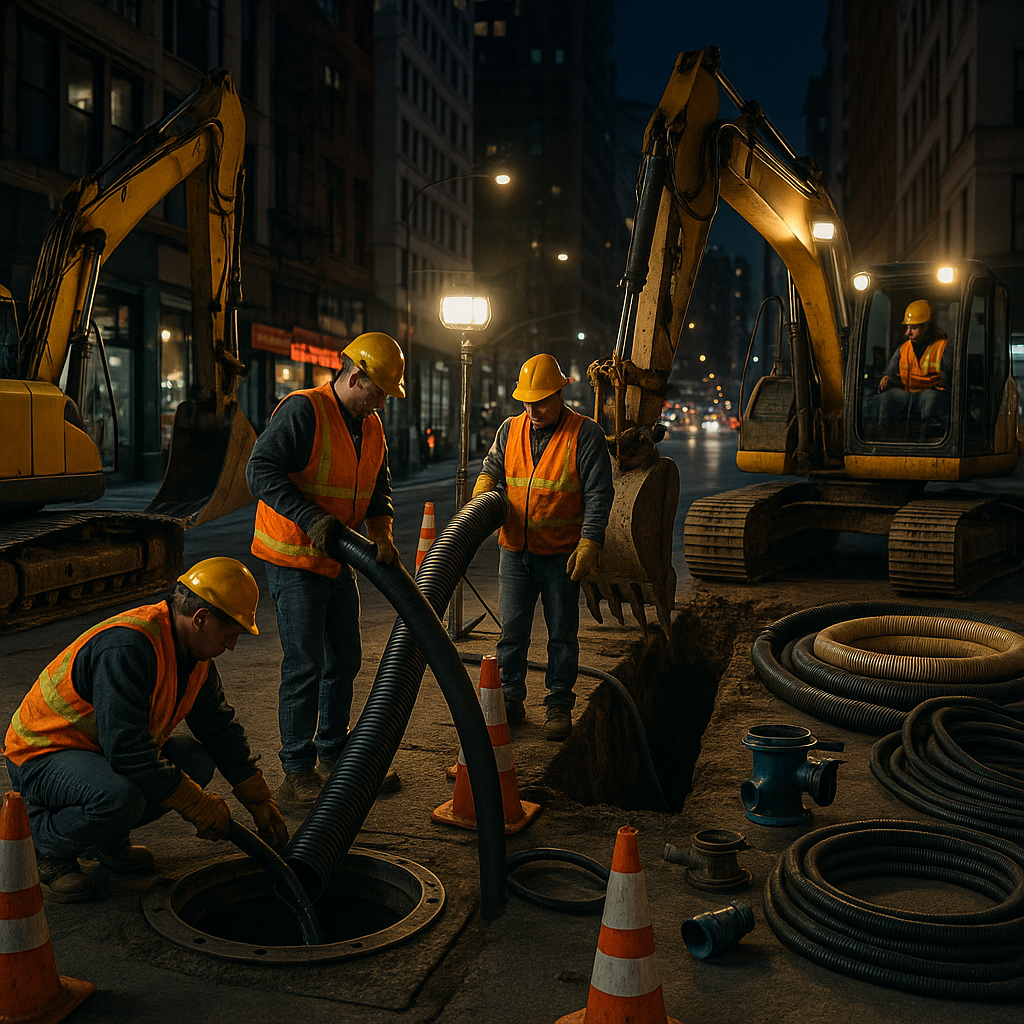Innovations in Trenchless Sewer Repair for 2024
Explore 2024's trenchless sewer repair advancements with AI, robotics, and market trends enhancing maintenance efficiency.

Innovations in Trenchless Sewer Repair for 2024
In 2024, the sewer inspection and plumbing industry is witnessing a transformative phase, largely driven by advancements in trenchless repair technologies. These developments are reshaping how professionals approach sewer maintenance, offering enhanced efficiency, accuracy, and environmental benefits.
Table of Contents
- Introduction to Trenchless Sewer Repair
- Emerging Technologies in Trenchless Repair
- Industry Regulations and Standards
- Market Trends and Opportunities
- Safety Protocols and Best Practices
- Case Studies and Success Stories
- Cost and Pricing Insights
- Practical Tips for Professionals
Introduction to Trenchless Sewer Repair
Trenchless repair technologies provide a non-invasive solution to sewer maintenance, significantly reducing the need for excavation. This method not only minimizes disruption to urban environments but also offers a cost-effective alternative to traditional repair methods.
Emerging Technologies in Trenchless Repair
AI and Machine Learning
The integration of AI and machine learning in sewer inspection is revolutionizing the way defects are detected and managed. These technologies enable:
- Enhanced Defect Detection: AI algorithms can identify cracks, corrosion, and leaks with greater accuracy.
- Predictive Maintenance: Machine learning models predict potential failures, allowing for proactive repairs.
- Automation: Reduces human error and increases operational efficiency.
High-Resolution Inspection Cameras
The introduction of wireless, portable, and 4K/HD cameras improves the precision of inspections. Benefits include:
- Accessibility: Easier inspection of hard-to-reach areas.
- Precision: High-resolution imagery for accurate diagnosis.
Robotic and Crawler Systems
Robotic and lateral-launch crawlers, such as the Envirosight ROVVER X SAT II, enhance inspection capabilities by:
- Increased Maneuverability: Navigating complex sewer networks.
- Extended Range: Covering larger areas with ease.
Industry Regulations and Standards
Though specific updates for 2024 are yet to be fully detailed, there is an increasing push towards stricter inspection and maintenance standards. This push is driven by:
- Infrastructure Modernization: Governments emphasize upgrading aging infrastructure.
- Environmental Compliance: Ensuring sewer systems do not pose ecological risks.
Market Trends and Opportunities
The market for sewer cameras is on a growth trajectory, expected to reach USD 606.79 million by 2032. Key factors include:
- Urbanization: Increasing demand for modern sewer systems.
- Aging Infrastructure: Necessity for efficient repair solutions.
- Investment in Technology: Companies adopting AI-enabled tools are gaining a competitive edge.
Safety Protocols and Best Practices
The adoption of automated inspection systems has enhanced safety by:
- Reducing Worker Exposure: Minimizing time spent in hazardous environments.
- Non-Invasive Methods: Using trenchless techniques to reduce physical intervention.
Case Studies and Success Stories
Recent product launches, such as RIDGID’s SeeSnake microDRAIN APX, demonstrate the practical benefits of new technologies. These innovations improve:
- Operational Efficiency: Faster and more accurate inspections.
- Accuracy: Better diagnostics leading to timely repairs.
Cost and Pricing Insights
While exact pricing details are evolving, the investment in advanced inspection systems is balanced by long-term savings:
- Reduced Excavation Costs: Less need for digging.
- Faster Repairs: Quicker turnaround times.
- Predictive Maintenance: Avoid costly emergency repairs.
Practical Tips for Professionals
- Stay Updated: Regularly attend industry seminars to keep abreast of new technologies.
- Invest in Training: Ensure your team is skilled in using AI-powered tools.
- Emphasize Safety: Prioritize non-invasive methods to protect your team and the environment.
By understanding and leveraging these advancements, professionals in the sewer inspection industry can significantly enhance their service offerings, ensuring they remain competitive in a rapidly evolving market.